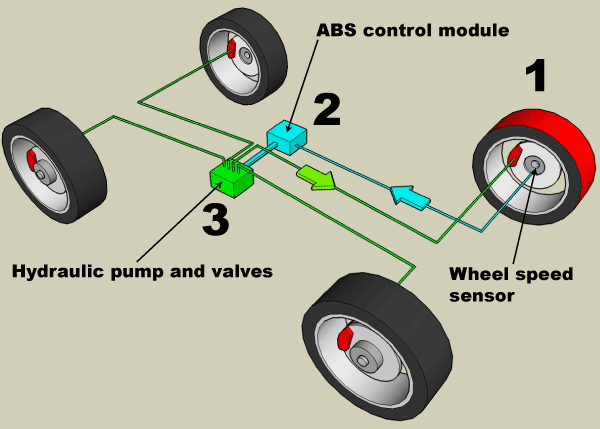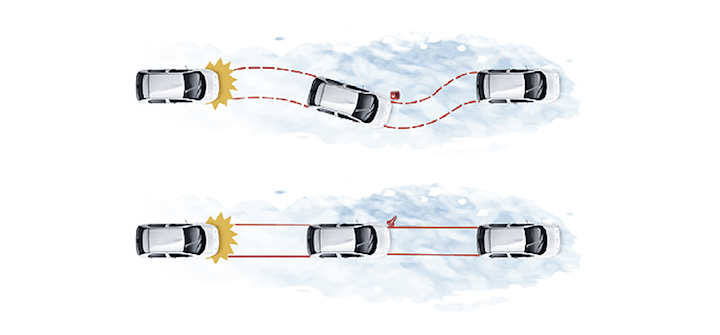
What is ABS in a car
Thanks to the anti-lock braking system, or ABS, the stability and control of the car during braking is ensured, and the braking distance is also shortened. To explain the principle of operation of this system is quite simple:
- on cars without ABS, when you press the brake pedal hard, the wheels are completely blocked - that is, they do not rotate and do not obey the steering wheel. Often there are situations when, when braking, you need to change the trajectory of movement, on a car without an anti-lock braking system, this cannot be done if the brake pedal is pressed, you will have to release the pedal for a short time, turn the steering wheel in the right direction and press the brake again;
- if ABS is on, then the wheels are never completely blocked, that is, you can safely change the trajectory of movement.

Another important plus, which gives the presence of ABS, the stability of the car. When the wheels are completely immobilized, it is very difficult to predict the trajectory of the car, any little thing can affect it - a change in the road surface (moved off the asphalt to the ground or paving stones), a slight slope of the track, a collision with an obstacle.
ABS allows you to control the trajectory of the braking distance.
ABS provides another advantage - the braking distance is shorter. This is achieved due to the fact that the wheels do not block completely, but slip a little - they continue to rotate on the verge of blocking. Due to this, the contact patch of the wheel with the road surface increases, respectively, the car stops faster. However, it is worth remembering that this is only possible on a dry track, but if you drive on a wet road, sand or dirt, then the use of ABS leads, on the contrary, to the fact that the braking distance becomes longer.
From this we see that the anti-lock braking system provides the following advantages:
- the ability to control the trajectory of movement during braking;
- stopping distance becomes shorter;
- the car maintains stability on the track.
Anti-lock braking system device
ABS was first used in the late 70s, although the principle itself has been known since the dawn of the automotive industry.
The first cars equipped with an anti-lock braking system are the Mercedes S-Klasse, they rolled off the assembly line in 1979.
It is clear that since then many modifications have been made to the system, and since 2004 all European cars are produced only with ABS.
Also with this system often use EBD - brake force distribution system. Also, the anti-lock braking system is integrated with the traction control system.

ABS consists of:
- the control unit;
- hydraulic block;
- wheel speed and brake pressure sensors.
The sensors collect information about the parameters of the car's movement and transmit it to the control unit. As soon as the driver needs to brake, the sensors analyze the speed of the vehicle. In the control unit, all this information is analyzed with the help of special programs;
The hydraulic block is connected to the brake cylinders of each wheel, and the change in pressure occurs through the intake and exhaust valves.
Loading…